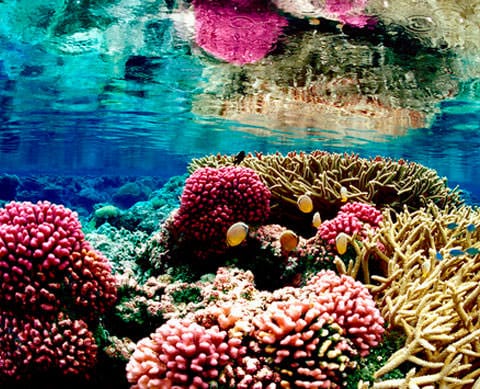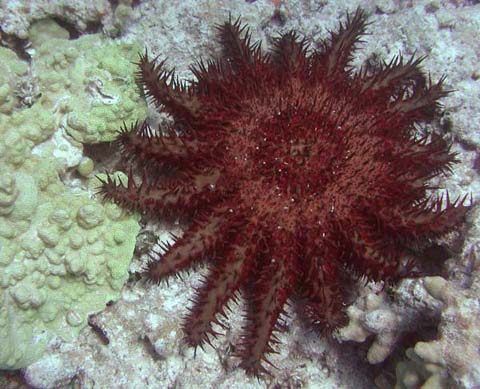Natural Threats to Coral Reefs
Corals Tutorial
Coral reefs face numerous threats. Weather-related damage to reefs occurs frequently. Large and powerful waves from hurricanes and cyclones can break apart or flatten large coral heads, scattering their fragments. A single storm seldom kills off an entire colony, but slow-growing corals may be overgrown by algae before they can recover.
Reefs also are threatened by tidal emersions. Long periods of exceptionally low tides leave shallow water coral heads exposed, damaging reefs. The amount of damage depends on the time of day and the weather conditions. Corals exposed during daylight hours are subjected to the most ultraviolet radiation, which can overheat and dry out the coral's tissues. Corals may become so physiologically stressed that they begin to expel their symbiotic zooxanthellae, which leads to bleaching, and in many cases, death.
Increased sea surface temperatures, decreased sea level and increased salinity from altered rainfall can all result from weather patterns such as El Niño. Together these conditions can have devastating effects on a coral’s physiology.
In addition to weather, corals are vulnerable to predation. Fish, marine worms, barnacles, crabs, snails and sea stars all prey on the soft inner tissues of coral polyps. In extreme cases, entire reefs can be devastated if predator populations become too high.
Coral reefs may recover from periodic traumas caused by weather or other natural occurrences. If, however, corals are subjected to numerous and sustained stresses including those imposed by people, the strain may be too much for them to endure, and they will perish.

Corals growing in very shallow water are the most vulnerable to environmental hazards. Shallow tides can expose them to the air, drying the polyps out and killing them. Branching corals growing in shallow water can be smashed by storms.

In addition to severe weather, corals are vulnerable to attacks by predators. Large sea stars like this crown-of-thorns (Acanthaster planci) slowly crawl over coral reefs consuming all of the living coral tissue they come into contact with. Learn more and view a larger image.